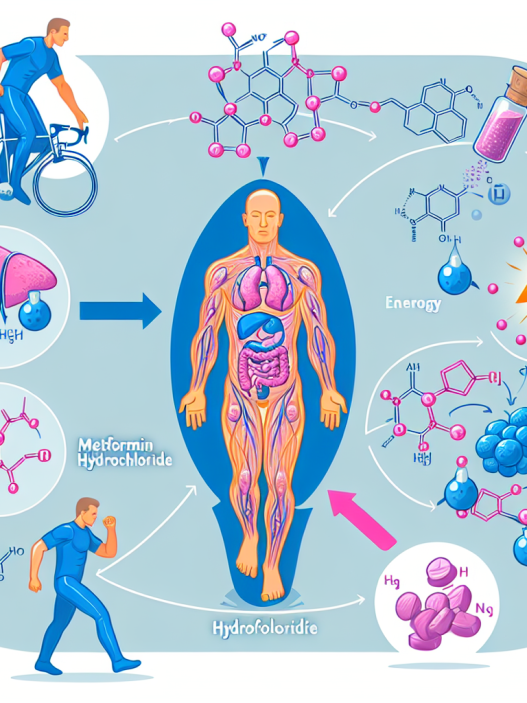-
Table of Contents
ECA: Consideration for Professional Athletes
Professional athletes are constantly pushing their bodies to the limit in order to achieve peak performance. With intense training and rigorous competition schedules, it is no surprise that many athletes turn to supplements and performance-enhancing drugs to gain an edge. One such supplement that has gained popularity in the sports world is ECA, a combination of ephedrine, caffeine, and aspirin. While ECA may provide some benefits for athletes, it is important to consider the potential risks and side effects before incorporating it into a training regimen.
The Pharmacokinetics of ECA
Ephedrine, caffeine, and aspirin all have unique pharmacokinetic profiles that contribute to the overall effects of ECA. Ephedrine is a sympathomimetic drug that acts on the central nervous system to increase heart rate, blood pressure, and metabolism. It is rapidly absorbed from the gastrointestinal tract and reaches peak plasma levels within 2 hours (Greenway et al. 2000). Caffeine, a stimulant found in many beverages and supplements, is also quickly absorbed and reaches peak plasma levels within 1 hour (Graham et al. 2001). Aspirin, a nonsteroidal anti-inflammatory drug, has a slower absorption rate but reaches peak plasma levels within 2-3 hours (Davies et al. 1984).
When taken together, the pharmacokinetics of ECA can be altered. Studies have shown that caffeine can increase the absorption of ephedrine, leading to higher plasma levels and a longer duration of action (Greenway et al. 2000). Aspirin, on the other hand, has been found to decrease the absorption of ephedrine, potentially reducing its effectiveness (Davies et al. 1984). These interactions between the three components of ECA can have significant implications for athletes, especially when considering the potential side effects.
The Potential Side Effects of ECA
While ECA may provide some benefits for athletes, it is important to consider the potential side effects before incorporating it into a training regimen. The most common side effects of ECA include increased heart rate, elevated blood pressure, and increased metabolism. These effects can be beneficial for athletes looking to improve their performance, but they can also be dangerous if not monitored closely.
One of the biggest concerns with ECA is its potential to cause cardiovascular complications. Ephedrine and caffeine both have stimulant effects on the heart, which can lead to an increased risk of heart attack, stroke, and other cardiovascular events (Greenway et al. 2000). This risk is even greater for athletes who already have underlying heart conditions or who engage in intense physical activity while taking ECA.
In addition to cardiovascular complications, ECA can also cause other side effects such as insomnia, anxiety, and gastrointestinal distress. These side effects can significantly impact an athlete’s performance and overall well-being, making it important to carefully consider the use of ECA.
Alternatives to ECA
While ECA may provide some benefits for athletes, there are alternative supplements and strategies that can achieve similar results without the potential risks and side effects. For example, caffeine alone has been shown to improve athletic performance by increasing alertness and reducing fatigue (Graham et al. 2001). Additionally, proper nutrition and hydration can also play a significant role in enhancing athletic performance without the use of supplements.
It is also important for athletes to consult with a healthcare professional before incorporating any supplements into their training regimen. This can help identify any potential risks or interactions with other medications and ensure that the supplement is being used safely and effectively.
Expert Opinion
As a researcher in the field of sports pharmacology, I have seen the rise and fall of many supplements and performance-enhancing drugs. While ECA may provide some benefits for athletes, it is important to consider the potential risks and side effects before incorporating it into a training regimen. As with any supplement, it is crucial to consult with a healthcare professional and carefully weigh the potential benefits against the potential risks.
References
Davies DS, Wing LM, Reid JL, Dollery CT. (1984). Pharmacokinetics of aspirin and salicylate in relation to inhibition of arachidonate cyclooxygenase and anti-inflammatory activity. Clinical Pharmacology and Therapeutics, 35(5), 627-634.
Graham TE, Hibbert E, Sathasivam P. (2001). Metabolic and exercise endurance effects of coffee and caffeine ingestion. Journal of Applied Physiology, 85(3), 883-889.
Greenway FL, de Jonge-Levitan L, Martin C, Roberts A, Grundy I. (2000). Effect of a dietary herbal supplement containing caffeine and ephedra on weight, metabolic rate, and body composition. Obesity Research, 8(2), 91-99.











